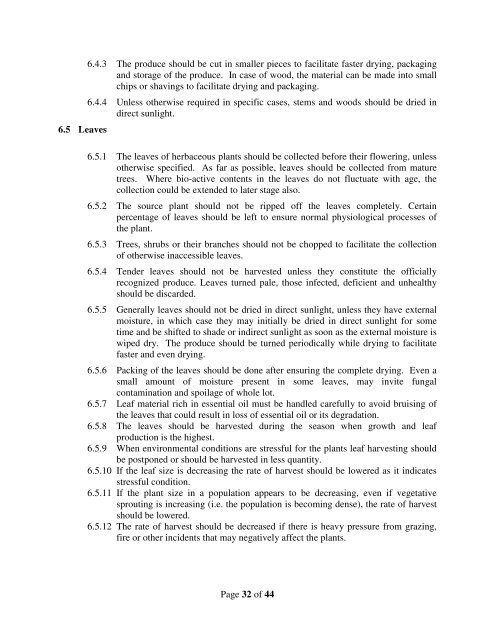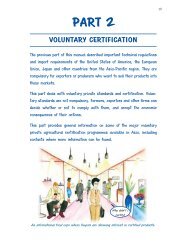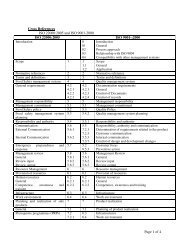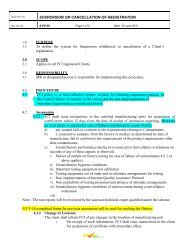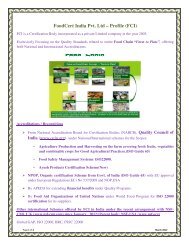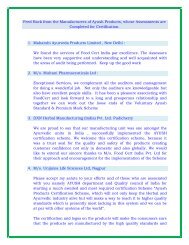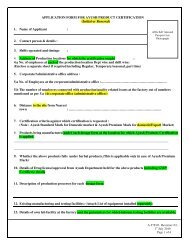Standard for Good Field Collection Practices - NMPB
Standard for Good Field Collection Practices - NMPB
Standard for Good Field Collection Practices - NMPB
Create successful ePaper yourself
Turn your PDF publications into a flip-book with our unique Google optimized e-Paper software.
6.4.3 The produce should be cut in smaller pieces to facilitate faster drying, packaging<br />
and storage of the produce. In case of wood, the material can be made into small<br />
chips or shavings to facilitate drying and packaging.<br />
6.4.4 Unless otherwise required in specific cases, stems and woods should be dried in<br />
direct sunlight.<br />
6.5 Leaves<br />
6.5.1 The leaves of herbaceous plants should be collected be<strong>for</strong>e their flowering, unless<br />
otherwise specified. As far as possible, leaves should be collected from mature<br />
trees. Where bio-active contents in the leaves do not fluctuate with age, the<br />
collection could be extended to later stage also.<br />
6.5.2 The source plant should not be ripped off the leaves completely. Certain<br />
percentage of leaves should be left to ensure normal physiological processes of<br />
the plant.<br />
6.5.3 Trees, shrubs or their branches should not be chopped to facilitate the collection<br />
of otherwise inaccessible leaves.<br />
6.5.4 Tender leaves should not be harvested unless they constitute the officially<br />
recognized produce. Leaves turned pale, those infected, deficient and unhealthy<br />
should be discarded.<br />
6.5.5 Generally leaves should not be dried in direct sunlight, unless they have external<br />
moisture, in which case they may initially be dried in direct sunlight <strong>for</strong> some<br />
time and be shifted to shade or indirect sunlight as soon as the external moisture is<br />
wiped dry. The produce should be turned periodically while drying to facilitate<br />
faster and even drying.<br />
6.5.6 Packing of the leaves should be done after ensuring the complete drying. Even a<br />
small amount of moisture present in some leaves, may invite fungal<br />
contamination and spoilage of whole lot.<br />
6.5.7 Leaf material rich in essential oil must be handled carefully to avoid bruising of<br />
the leaves that could result in loss of essential oil or its degradation.<br />
6.5.8 The leaves should be harvested during the season when growth and leaf<br />
production is the highest.<br />
6.5.9 When environmental conditions are stressful <strong>for</strong> the plants leaf harvesting should<br />
be postponed or should be harvested in less quantity.<br />
6.5.10 If the leaf size is decreasing the rate of harvest should be lowered as it indicates<br />
stressful condition.<br />
6.5.11 If the plant size in a population appears to be decreasing, even if vegetative<br />
sprouting is increasing (i.e. the population is becoming dense), the rate of harvest<br />
should be lowered.<br />
6.5.12 The rate of harvest should be decreased if there is heavy pressure from grazing,<br />
fire or other incidents that may negatively affect the plants.<br />
Page 32 of 44


